This article was co-authored by Chris M. Matsko, MD. Dr. Chris M. Matsko is a retired physician based in Pittsburgh, Pennsylvania. With over 25 years of medical research experience, Dr. Matsko was awarded the Pittsburgh Cornell University Leadership Award for Excellence. He holds a BS in Nutritional Science from Cornell University and an MD from the Temple University School of Medicine in 2007. Dr. Matsko earned a Research Writing Certification from the American Medical Writers Association (AMWA) in 2016 and a Medical Writing & Editing Certification from the University of Chicago in 2017.
There are 9 references cited in this article, which can be found at the bottom of the page.
This article has been viewed 111,238 times.
As the chosen one in a group of friends, you may be responsible for getting contraception for your teen peers. Using contraception like condoms is a good way to have safe sex, protecting both you and your partner from an unwanted pregnancy as well as STDs. You should select the right condoms for you before you get them and make sure you use them correctly to ensure you are having enjoyable, and safe, sex.
Steps
Getting the Condoms
-
1Go to your local drugstore. You can get condoms without a prescription at your local drugstore. Often they are located in the medical supplies aisle or the personal health aisle of the drugstore. You do not need to provide ID to buy the condoms and they are often not very expensive to purchase.[1]
- You can also find condoms for sale at your local gas station or at the supermarket. There are usually a variety of condoms at these outlets in a variety of condom sizes.
- While it can be embarrassing, if you have questions you can ask your doctor or pharmacist.
-
2Buy condoms online. Though you can easily pop out to the nearest gas station or supermarket for condoms, you may want to buy them more discreetly. Buying condoms online will allow you to access a wider variety of condoms and be able to purchase them from the comfort of your home. Many vendors will ship condoms directly to you in the mail.[2]
- Before you order male condoms online, you should make sure you are buying condoms in the right size. Measure yourself and have your friends measure themselves to ensure the condoms will fit properly.
- Most regular condoms fit all sizes even if you are well endowed; however, it is a good idea to know your size.
- Some people like their condoms to fit a little tighter than others. Try different types of condoms and see which is most enjoyable for you.
-
3Talk to your school nurse. You should also be able to get condoms from your school nurse. Often, your school nurse will have condoms available for free in their office. Condoms should be readily available to you at school, especially if they are promoting safe sex for teens.[3]
- If you cannot get condoms from your school nurse, you can go to a sexual health clinic in your area, such as Planned Parenthood. You can also get condoms from your primary care doctor, often for free.
-
4Look in public washrooms. You can also find male and female condoms in vending machines in public washrooms. Condoms are be purchased from these vending machines for a few dollars. The condoms will be wrapped in protective plastic that you will then remove before using the condom.
- Before you buy condoms from the vending machine, you should check the service date on the machine to ensure the condoms are not expired. Never use expired condoms, as they may not be effective.
- At Pride Festivals there are always volunteers handing out condoms, and in some LGBT establishments they have free condoms available. Grab a handful!
Selecting the Condoms
-
1Determine if you need male condoms or female condoms. Condoms come in male and female versions. Male condoms are more commonly used and easier to find. Both male and female condoms work to protect both partners during sex.[4]
- A male condom covers the penis and catches the sperm as the man ejaculates.
- A female condom is a thin plastic pouch that lines the vagina to prevent the sperm from entering the uterus. The pouch has two flexible rings, one that fits inside your vagina and one that sits outside your vagina.
-
2Look for condoms that are unscented and unflavored. You should opt for condoms that do not have any scents or flavors as these types can cause irritation or infections. You should also look for condoms that are durable and well made. You can check the label on the condoms to make sure they are made of durable materials that protect against the condom breaking during sex.[5]
- Keep in mind condoms that are old or expired may be prone to breakage. You should always go for a durable, high quality option that are not expired.
-
3Check for a latex allergy. Before you pick up condoms for friends, or for yourself, you should confirm that there are no allergies to latex. Latex is a material that is used in male condoms and it can cause an allergic reaction for men and women. If you are allergic to latex, you can opt for condoms made out of polyisoprene or polyurethane. Keep in mind latex allergies are pretty rare, affecting about 1% of the general population.[6]
- You should also check to see if your friends are allergic to spermicide. Often, individuals with sensitive skin can react badly to spermicide. Avoid condoms that contain spermicide and go for non-lubricated condoms to prevent an allergic reaction.
-
4Go for regular sized condoms. If you are buying male condoms, or using them yourself, you may want to go for condoms in regular size to start. Regular sized condoms are good option, unless your friends specify they would like a specific size.
- If you want to be sure the condoms will fit properly, you may want to have your friends measure themselves to determine their condom size. Using condoms that are the right size will make sex more enjoyable and help to prevent the condom from slipping off during sex.[7]
- Condoms usually come in small, regular, large, and extra large sizes. The sizing is based on the length and width of your penis.
- Small is 1.75” width x 6.3” long (4.45 cm x 16 cm)
- Regular is 2.0” width x 7.9” long (5.08 cm x 20 cm)
- Large is 2.12” width x 7.9” long (5.38 cm x 20 cm)
- Extra large is 2.25” width x 8.1” long (5.71 cm x 21 cm)
Using the Condoms Correctly
-
1Put the male condom on the penis. You should put a condom on your penis before you have sex. Do this once your penis is erect. Tear the packet of the condom and take it out carefully. Do not tear or rip the condom itself.[8]
- Check that the condom is unrolling the right side out. If you have foreskin, pull it back. Place the condom on the top of your penis. If there is a teat on the end of the condom, squeeze the air out of it using your thumb and forefinger.
- Carefully unroll the condom all the way to the base of your penis. Once the condom is secure on your penis, you can enter your partner.
- If the condom won’t roll down, it is probably inside out. You should take it off, throw it away, and try again with a new condom. This will ensure there is no sperm on the condom when you use it.
-
2Insert the female condom. If you are using a female condom, you should insert it into your vagina or your anus before you have sex. The condom will be tube-shaped, with a flexible ring on each end. You will place the inner ring at the closed end into your vagina or anus and let the outer ring at the open end sit outside your vagina or anus.
- Your partner’s penis will then be inserted into the open end of the condom, creating a barrier between your vagina or anus and their sperm.
- You should only use a male condom or a female condom when having sex. Using both condoms at the same time can lead to friction and rubbing, which could then cause the condoms to break.
- Female condoms are not as readily available and are used less often, but they are a viable option.
-
3Use water-based lubricant, if necessary. Lubricant can help to prevent condoms from breaking during sex. It can also prevent irritation caused by skin-on-skin friction during sex. Only use water-based lubricants that are advertised for use during sex. Often, you can find these lubricants in the same aisle or area as condoms.
- Do not use oil-based lubricants like Vaseline, baby oil, body lotion, or vegetable oils. These oils will weaken the condom and can lead to breakage.
- The pharmacy may be the best place to buy lubrication, but adult bookstores have a variety of lubricants, and some of these lubricants are more enjoyable.
-
4Remove the condom and dispose of it once you have had sex. Once you have had sex, you should remove the condom right away. Only use the condom once and use a new condom when/if you have sex again.[9]
- If you are using a male condom, withdraw the penis while it is still erect. Hold the condom at the base of your penis and then carefully pull the condom off. Do not to spill any of the semen or allow your penis to touch your partner’s genital area.
- If you are using a female condom, you should carefully slide out the inner ring of the condom from your vagina. Remove the condom from your genital area, making sure none of the semen spills out on you or your partner.[10]
- Always throw condoms away in the garbage. Do not flush condoms down the toilet.
-
5Store the condoms in a cool, dry place. You should always store condoms in a spot away from heat or moisture. Make sure the condoms are properly sealed and wrapped in the box. You may place the condoms in an easy to reach place so you can locate them before having sex, such as in a drawer by your bed.[11]
- Make sure you check the expiration date on the condoms before you use them, as you should not use expired condoms.
-
6Get emergency contraception if the condom breaks. Sometimes a condom breaks, it slips off, or it does not work properly. If this happens, you should take steps to protect yourself and your partner from STDs and from an unwanted pregnancy.[12]
- The female partner can take the Plan B pill, a progestin hormone that you can get over-the-counter. This pill can act as emergency contraception and help to prevent unwanted pregnancy. It should be taken as soon as you realize the condom did not work properly or up to five days after having sex.[13]
- You and your partner should also be tested for STDs. Make sure you have a clean bill of health before you have sex again to prevent the spread of STDs.
- Talk to your doctor about Plan B and about STD’s. Condoms do not protect from all STD’s, but they are the best option.
References
- ↑ http://www.nhs.uk/Conditions/contraception-guide/Pages/male-condoms.aspx
- ↑ http://learn.condomdepot.com/first-time-purchasing-condoms-a-buyers-guide/
- ↑ https://www.urmc.rochester.edu/encyclopedia/content.aspx?contenttypeid=90&contentid=P01645
- ↑ http://www.acog.org/Patients/FAQs/Birth-Control-Especially-for-Teens#condoms
- ↑ http://www.acog.org/Patients/FAQs/Birth-Control-Especially-for-Teens#condoms
- ↑ https://my.clevelandclinic.org/health/diseases/8623-latex-allergy
- ↑ https://www.verywellhealth.com/condom-size-chart-906776
- ↑ https://www.cdc.gov/condomeffectiveness/external-condom-use.html
- ↑ https://www.cdc.gov/condomeffectiveness/external-condom-use.html
- ↑ https://www.cdc.gov/condomeffectiveness/internal-condom-use.html
- ↑ http://www.nhs.uk/Conditions/contraception-guide/Pages/male-condoms.aspx
- ↑ http://www.nhs.uk/Conditions/contraception-guide/Pages/male-condoms.aspx
- ↑ https://www.healthychildren.org/English/ages-stages/teen/dating-sex/Pages/Birth-Control-for-Sexually-Active-Teens.aspx
-for-Your-Teen-Friends-Step-1-Version-2.webp)
-for-Your-Teen-Friends-Step-2-Version-2.webp)
-for-Your-Teen-Friends-Step-3-Version-2.webp)
-for-Your-Teen-Friends-Step-4-Version-2.webp)
-for-Your-Teen-Friends-Step-5-Version-2.webp)
-for-Your-Teen-Friends-Step-6-Version-2.webp)
-for-Your-Teen-Friends-Step-7.webp)
-for-Your-Teen-Friends-Step-8.webp)
-for-Your-Teen-Friends-Step-9.webp)
-for-Your-Teen-Friends-Step-10.webp)
-for-Your-Teen-Friends-Step-11.webp)
-for-Your-Teen-Friends-Step-12.webp)
-for-Your-Teen-Friends-Step-13.webp)
-for-Your-Teen-Friends-Step-14.webp)
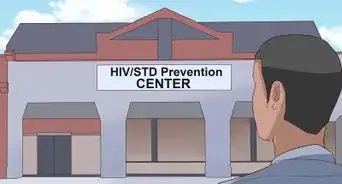
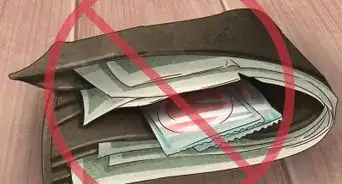


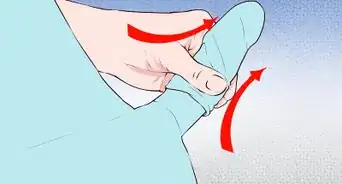




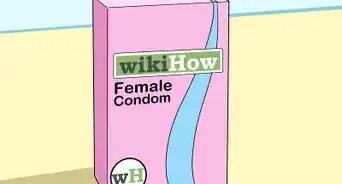
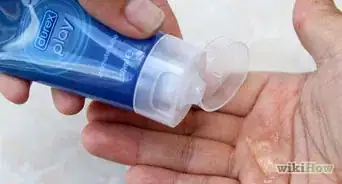
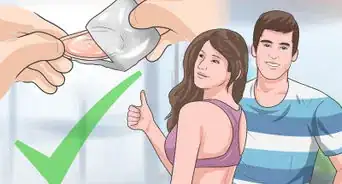
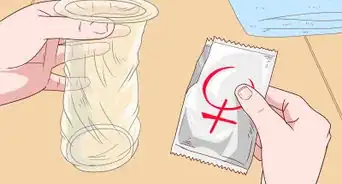







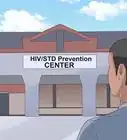
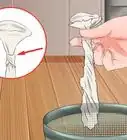





































Medical Disclaimer
The content of this article is not intended to be a substitute for professional medical advice, examination, diagnosis, or treatment. You should always contact your doctor or other qualified healthcare professional before starting, changing, or stopping any kind of health treatment.
Read More...